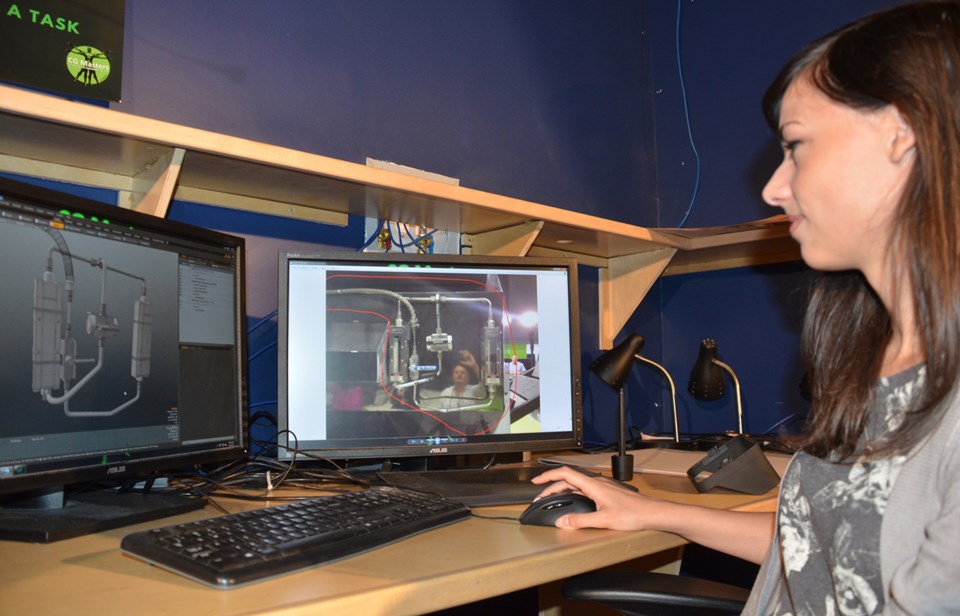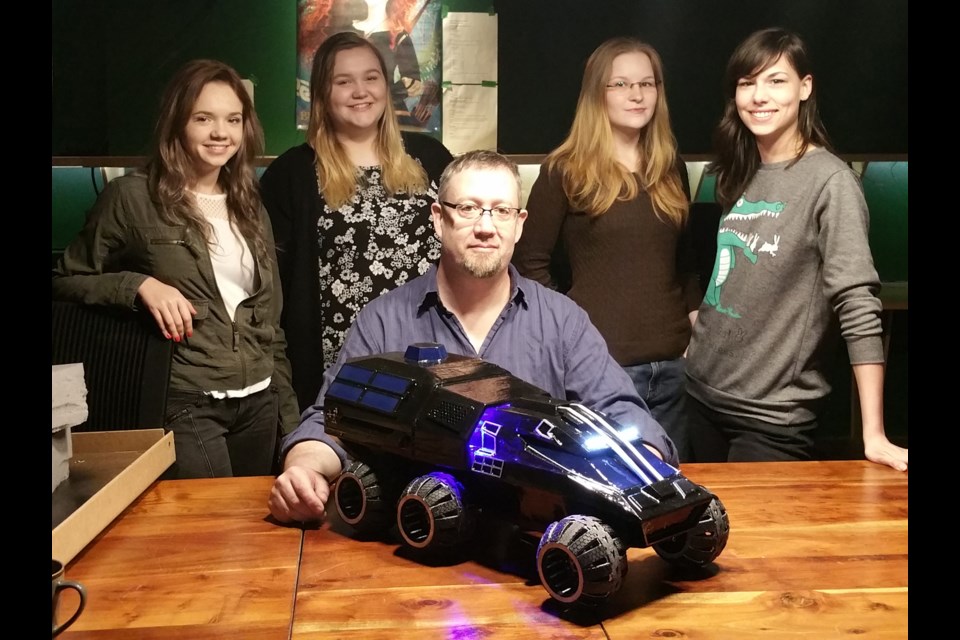Nicholas Boughen is a space geek and tech geek, so when NASA called asking him to build something, he quickly responded, “Hell, yeah!”
Boughen is the co-founder and director of education at the CG Masters School of 3D Animation & VFX at The Shops at New Westminster Station. One of his mentors and friends is noted 3D and lighting artist William Vaughan, who lives in Orlando, Florida. Andrew Kral, the project development manager for the Kennedy Space Center’s visitor complex, went to Vaughan looking for someone to build a radio-controlled, one-tenth scale model of NASA’s Mars Rover design concept vehicle, and it needed to be done in 12 weeks.
“I got a call saying, ‘These guys’ve got a crazy-tight deadline. They need this done, can you get it done?’” said Boughen. “Deadlines are not new to us. I’ve worked in film and TV for years. Deadlines are the line of death, and you have to find the way to make that.
“William knows if you want something done, you go to somebody that can get it done with no nonsense. When you work with Hollywood clients for many years, you know how to get stuff done.”
But this wasn’t Hollywood. It was the National Aeronautics and Space Administration. And failure was not an option.
“I’ve been a space geek since I was a little kid. It’s a dream to do anything for NASA; I watched on TV when Neil Armstrong set foot on the moon (in 1969),” said Boughen, who turns 54 Monday.
“What’s happened is they’re looking at somebody who is in Grade 5 right now who is going to set foot on Mars. So they’re building this whole Mars exhibit, and at the same time were in the process of building a concept vehicle for the Mars Rover.
“I’m looking at this and it’s amazing. I don’t have time for this. And then I realized if I bring my students in on it they can be doing 3D modelling on it as well and we can split up the work.”
So he walked into the classroom and asked, “Who here would like to do a side gig for NASA?”
That was a big ask considering the students were in the middle of an intense simulated film production.
“But it has to be a side project, you still have to get all this stuff done. Your deadlines are still totally hard deadlines,” he tells them.
Five students – Lena Engel, Brooke Sanders, Anna Glushkova, Kiera Chycoski and Stephen Tran – put up their hands and volunteered.
“There were a few students who were, ‘meh, nah,’ and I didn’t understand that. But five of them were like, ‘Yeah, we’re all in,’” said Boughen.
“I was nervous to say I wanted to do it, but it wasn’t really an opportunity you couldn’t pass up,” said Chycoski.
“I didn’t think it was real at first,” said Sanders. “I knew I had to work on it. It’s because it’s NASA, it’s a once-in-a-lifetime type of deal.”
All they had to work from was a bunch of pictures of the prototype. First, they bought a radio-controlled truck and took off the body and used the chassis as the base. Then they divvied up sections of the vehicle to replicate.
Boughen said problem solving is the main job skill in his biz. He loves the challenge and accepts the high degree of trial and error required to pull it off. “You have to know there’s going to be a certain percentage of failure, and just work with it.”
He tells students, “The skills and discipline that you learn from achieving a difficult goal are often more valuable than the achievement of the goal itself.”
There were long hours of design on the computer for all of them. The 3D printer got a workout too. For instance, the wheels, which Boughen was in charge of replicating, required 150 hours on the printer. That’s six days and six hours.
“It was a lot of the pressure that was the most challenging. A lot of ‘I want this to be perfect,’” said Sanders. “It was a pretty intense (film) project we were doing, so it was a little bit hard to find the time afterward. But all in all, I would say it was worth squeezing in a few extra hours to get this done.”
It didn’t come without some frustrations.

A week before the shipping deadline, Boughen suffered neck and chest pain during kickboxing class. By the time the ambulance arrived he was all right, but the paramedics took him to the hospital anyway. An EKG revealed he’d had a heart attack. While awaiting an angiogram, and with his cardiologist’s permission, Boughen hooked his iPhone up to program the printer remotely from his hospital bed. The angiogram revealed a narrowing in one of his arteries and the doctors fixed it with a stent.
Then it was back to doing the finishing paint job on the Rover in time for it to be shipped.
“Deadline is always absolute, and it’s one of the hardest things to teach, actually.”
Although sad to see it go, the relief wasn’t only about the long hours being done.
“The hardest part was not telling anyone because we had to keep it a secret until it was revealed by NASA, and it’s hard not to tell everyone it was a project for NASA,” said Chycoski.
Said Sanders, “At first, some of my friends didn’t really believe me, but after I showed them the post on Facebook it was really exciting for everyone.”
It was in Orlando, too, when the replica arrived.
“The NASA guys were so excited when they got it,” said Boughen. “They had video of when they opened the box and took it out, but they said they couldn’t post it to us because it was filled with expletives.”
But Kral’s email to Boughen wasn’t.
“Please, pass on to your team that worked on the rover that it was a fantastic success,” he wrote.
“The Rover’s an amazing and awesome addition. We truly appreciate all of your hard work and now everybody wants one,” said Therrin Protze, chief operating officer for DNC Parks and Resorts at Kennedy Space Center.
They also sent along photos of the Rover’s reveal. “Seeing the picture of the little tiny one we made next to the real big one was real exciting,” said Chycoski.
Sometimes Boughen, the space geek, contemplates the possibility the replica might inspire a Grade 5 visitor to the Kennedy Space Center to become one of the astronauts to drive a Rover on Mars. That’s an event he plans he believes he’ll see in his lifetime, just like he did watching a man on the moon.



